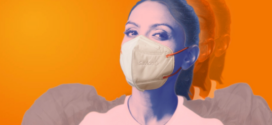Breathing becomes more difficult with the progressive lung condition known as chronic obstructive pulmonary disease (COPD). Although it is frequently linked to smoking, COPD can also strike nonsmokers. With over 30 million affected, COPD is a significant public health issue in India.
Even among nonsmokers, it is critical to increase awareness of the symptoms and risk factors associated with COPD on World COPD Day. We can lessen the impact of COPD on people and society at large by raising awareness of the condition and implementing preventative measures.
What is COPD?
A chronic lung illness called COPD causes the lungs’ airflow to be obstructed. It is brought on by injury to the lungs’ alveoli, or air sacs. Long-term exposure to irritants including cigarette smoke, air pollution, and dusts and fumes from the workplace might result in this harm. Being a progressive condition, COPD progressively worsens over time. Although there isn’t a cure for COPD, there are therapies that can help control the symptoms and stop the illness from getting worse.
The Unusual Suspects – Nonsmokers and COPD
Even though quitting smoking is the main risk factor for COPD, the illness can nonetheless strike nonsmokers. About 25–30% of COPD patients in India are thought to have never smoked. In nonsmokers, other risk factors for COPD include:
● Exposure to secondhand smoke
● Air pollution
● Occupational exposure to dusts and fumes
● Asthma
● Frequent respiratory infections
● Alpha-1 antitrypsin deficiency (a genetic condition)
Occupational Hazards and Indoor Air Pollution
Some jobs expose workers to dangerous substances that raise their chance of developing COPD. For instance, exposure to dust and fumes increases the risk for miners, construction workers, and farmers. Another significant risk factor for COPD, especially in India, is indoor air pollution. Dust mites, secondhand smoking, and smoke from cooking and heating stoves are common indoor air contaminants.
Early Detection and Prevention
Since COPD can be better controlled in its early stages, early detection and diagnosis are crucial. Typical COPD symptoms include:
● Shortness of breath, especially during activity
● Coughing
● Wheezing
● Chest tightness
Consult a physician for a diagnosis if you encounter any of these symptoms. The following lifestyle modifications and preventive actions can help lower the risk of COPD:
● Give up smoking. The most crucial thing you can do to lower your risk of COPD is to stop smoking.
● Do not smoke around others.The dangers of secondhand smoke are equivalent to those of smoking.
● Cut down on the amount of pollutants in the air. Spend as little time outside as possible when air pollution is high.
● When in the presence of dust or fumes, wear a mask. This is particularly crucial if your profession exposes you to these dangers.
● Obtain a vaccination against influenza and pneumonia.
Coping Strategies and Treatment
Although there isn’t a cure for COPD, there are therapies that can help control the symptoms and stop the illness from getting worse. Common therapies include of:
● Bronchodilators: These drugs relax the muscles in the lungs and makes breathing easing by widening the airways.
● Inhaled corticosteroids: These drugs lessen respiratory tract inflammation.
● Oxygen therapy: This treatment gives patients with severe COPD extra oxygen.
● Pulmonary rehabilitation: People with COPD can enhance their quality of life with this exercise and education program.
The Role of Advocacy and Awareness
World COPD Day is a significant chance to spread knowledge about the illness and how it affects people individually as well as in families. In addition, communities, organisations, and individuals may help prevent and manage COPD by:
● Educating friends, family, and neighbours about the disease.
● Supporting laws that lower exposure to work-related risks and air pollution.
Authored by Dr. Sunil Kumar K, Lead Consultant – Interventional Pulmonology, Aster CMI Hospital, Bangalore.
 Newspatrolling.com News cum Content Syndication Portal Online
Newspatrolling.com News cum Content Syndication Portal Online





